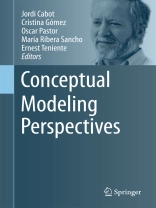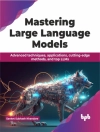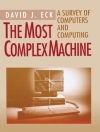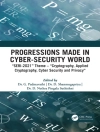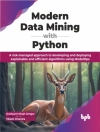Conceptual modeling has always been one of the main issues in information systems engineering as it aims to describe the general knowledge of the system at an abstract level that facilitates user understanding and software development.
This collection of selected papers provides a comprehensive and extremely readable overview of what conceptual modeling is and perspectives on making it more and more relevant in our society. It covers topics like modeling the human genome, blockchain technology, model-driven software development, data integration, and wiki-like repositories and demonstrates the general applicability of conceptual modeling to various problems in diverse domains. Overall, this book is a source of inspiration for everybody in academia working on the vision of creating a strong, fruitful and creative community of conceptual modelers.
With this book the editors and authors want to honor Prof. Antoni Olivé for his enormous and ongoing contributions to the conceptual modeling discipline. It was presented to him on the occasion of his keynote at ER 2017 in Valencia, a conference that he has contributed to and supported for over 20 years. Thank you very much to Antoni for so many years of cooperation and friendship.
Inhoudsopgave
1 A Tribute to Antoni Olivé on the Occasion of His Retirement.- 2 30 Years of Contributions to Conceptual Modeling.- 3 Modeling Life: A Conceptual Schema-centric Approach to Understand the Genome.- 4 Strategic Reading & Conceptual Modeling.- 5 Conceptual Modeling for Indicator Selection.- 6 Conceptual Modeling in Accelerating Information Ingest into Family Tree.- 7 Model Centered Architecture.- 8 Design-time Models for Resiliency.- 9 Web System Development Using Polymorphic Widgets and Generic Schemas.- 10 Model-Based Engineering for Database System Development.- 11 Quality Improvement of Conceptual UML and OCL Schemata through Model Validation and Verification.- 12 Creating Worlds with Words: Ontology-guided Conceptual Modeling for Institutional Domains.- 13 Quality of Conceptual Models in Model Driven Software Engineering.- 14 A Unified Conceptual Framework for Managing Services in the Web Oriented Architecture.- 15 Handling the Evolution of Information Systems: An Overview of Challenges and Prospective Solutions.- 16 On Warehouses, Lakes, and Spaces: The Changing Role of Conceptual Modeling for Data Integration.- 17 A Method for Emerging Technology Evaluation. Application to Blockchain and Smart Data Discovery.- 18 The Early Days of Entity-Relationship Modeling Retrospective on Dataid Project and Beyond.
Over de auteur
Jordi Cabot has been a professor at the Internet Interdisciplinary Institute (IN3), a research center of the Universitat Oberta de Catalunya (UOC) since 2015. His research falls into the broad area of systems and software engineering, especially promoting the rigorous use of software models and engineering principles in all software engineering tasks.
Cristina Gómez is a member of the GESSI research group at the Universitat Politècnica de Catalunya. Her research interests focus on conceptual modeling, information systems and object-oriented analysis and design.
Oscar Pastor is a professor and director of the “Centro de Investigación en Métodos de Producción de Software (PROS)” at the Universidad Politécnica de Valencia (Spain). His research activities focus on conceptual modeling, web engineering, requirements engineering, information systems, and model-based software production.
Maria-Ribera Sancho is a professor at the Universitat Politècnica de Catalunya. Her main research areas include conceptual modeling, information systems, software and service science engineering. Recently her research interests have focused on learning analytics and conceptual modeling.
Ernest Teniente is a professor at the Universitat Politécnica de Catalunya’s Department of Service and Information System Engineering. His research interests include ontologies and conceptual modeling, business process modeling, automated reasoning, integrity constraints enforcement, the Internet of Things, and data integration.
